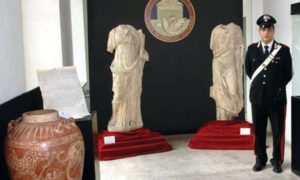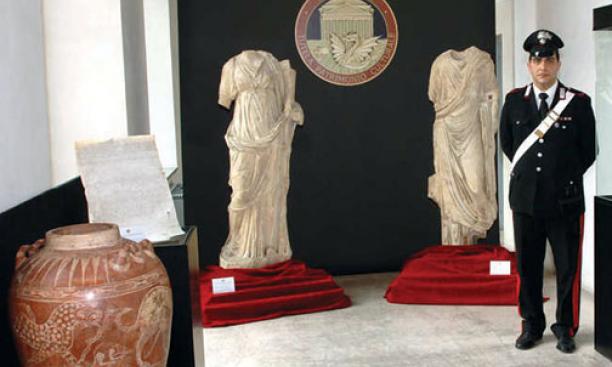8 Ancient Greco-Roman Objects
Description:

Case Status: Some objects relinquished
Year Claim Initiated: 2004
Year Claim Resolved: 2007
Means of Resolution: Inquiry/Demand
Complainant Name: Ministry of Cultural Properties and Activities of the Republic of Italy
Complainant Nation: Italy
Complainant Nation Economy: Developed
Complainant Type: Public: Government
Respondent Name: Princeton University Museum of Art
Respondent Nation: United States
Respondent Nation Economy: Developed
Respondent Type: Private: Institution
Reference Links:
- https://paw.princeton.edu/article/art-museum-return-ancient-objects-italy
- https://www.princeton.edu/news/2007/10/26/princeton-university-art-museum-and-italy-sign-agreement-over-antiquities
- https://www.chronicle.com/article/princeton-agrees-to-return-8-art-objects-to-italy-but-will-keep-7-others-123338/
- https://paw.princeton.edu/article/art-museum-returns-more-ancient-artworks-italy
Files:
Editor's Notes:
There are 15 objects in question, starting in 2004 with Italian inquiry into a Greek psykter, an Apulian loutrophoros and an Etruscan relief. The museum keeps 7 and returned 8.
Four objects to be transferred in title but to remain on loan to the Princeton University Art Museum from the Ministry of Cultural Properties and Activities of the Republic of Italy.
1. Red figure loutrophoros (ceramic), attributed to the Darius Painter, depicting the mourning of Niobe and woman and youths at a foundation house. South Italian, Apulian, ca. 335-325 B.C.
2. Head of a winged lion (brown volcanic stone). Etruscan, ca. 550-525 B.C.
3. Red figure psykter depicting Symposion, or drinking party (ceramic), attributed to the Kleophrades Painter. Greek, Attic, ca. 510 500 B.C.
4. Red figure volute krater, attributed to the Iliupersis Painter (ceramic), depicting the return of Perseus to Seriphos and Dionysos, maenads and satyrs. South Italian, Apulian, ca. 370 360 B.C.
Four objects to be transferred from the Princeton University Art Museum to the Ministry of Cultural Properties and Activities of the Republic of Italy.
5. Columen plaque with a Centaur in Relief (Terracotta, painted). Etruscan, southern Etruria or Latium, ca. 500-480 B.C.
6. Oinochoe with a serpent around the body (ceramic). Etruscan, ca. 675 B.C.
7. Black figure skyphos fragment with a sprinting youth (ceramic). Etruscan, ca. 510 500 B.C.
8. Oinochoe, attributed to the Ivy Leaf Group, with naked male runners holding large ivy leaves (ceramic). Etruscan, ca. 540-530 B.C.
Seven objects to remain permanently at the Princeton University Art Museum.
9. Red figure kylix attributed to the Brygos Painter, depicting on its inside Hermes and one of the cattle of Apollo, and on the outside infant Hermes and the cattle of Apollo (ceramic). Greek, Attic, ca. 490 480 B.C.
10. Inlaid dagger and sheath (bronze, iron, silver, gold, niello). Roman, ca. first-second centuries A.D.
11. Plate with the Ransom of Hector (ceramic). Greek, Corinthian, ca. 580 570 B.C.
12. Fragment from a red figure lekythos depicting flying Nike (ceramic). Greek, Attic, ca. 480 470 B.C.
13. Pair of charging Amazons (painted terracotta). Greek, South Italy, Canosa, ca. 300 280 B.C.
14. Vessel (guttus) in the form of a drunken Silenus (ceramic). Greek, South Italy, Apulian, fourth century B.C.
15. Teano ware vessel in the form of a bird (ceramic). South Italy, Campanian, ca. 325 300 B.C.
Edited by Arianne Ohara.
